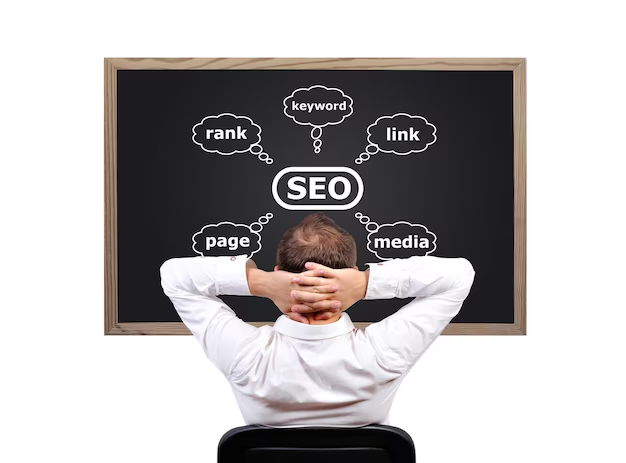Building a WordPress theme is an exciting journey, especially for developers who want to create themes that are not only visually appealing but also perform well in search engine rankings. However, the process of building a theme goes beyond just design and functionality—it also involves following SEO best practices to ensure that your theme helps websites rank higher on search engines like Google. In this article, we’ll cover the common SEO mistakes that theme developers should avoid when building WordPress themes to ensure better performance and visibility for users.
1. Ignoring Mobile Responsiveness
With the majority of users accessing websites through mobile devices, mobile responsiveness is crucial. A theme that doesn’t adapt to different screen sizes can lead to poor user experience, which can negatively impact your site’s search engine ranking. Google uses mobile-first indexing, meaning that it primarily uses the mobile version of a site’s content for indexing and ranking. Ensure that your theme is fully responsive and offers a seamless browsing experience across all devices.
2. Slow Loading Speeds
One of the most significant factors affecting SEO is site speed. A slow-loading website can increase bounce rates and drive users away, which in turn can harm your search rankings. When building a WordPress theme, avoid heavy and unnecessary scripts, and optimize images for faster loading. Use tools like Google PageSpeed Insights to measure your theme’s speed and identify areas of improvement. Compress images, use minified CSS and JavaScript, and consider lazy loading for images to enhance the theme’s performance.
3. Poor Use of Heading Tags
Heading tags (<h1>, <h2>, <h3>, etc.) play an important role in structuring content for both users and search engines. Improper use of heading tags, such as using multiple <h1> tags on a page or using headings for styling purposes rather than structure, can confuse search engines and hurt your SEO. Make sure to use heading tags correctly when developing your WordPress theme. Use a single <h1> for the main title and then use <h2> and <h3> tags for subheadings as needed.
4. Not Optimizing for Schema Markup
Schema markup helps search engines better understand the content on a webpage and can enhance your listings in search results with rich snippets. Not including support for schema markup in your WordPress theme can be a missed opportunity for users to benefit from better search visibility. Consider adding structured data to your theme for elements like articles, reviews, events, products, and more. This can lead to better click-through rates (CTR) as rich snippets make your content stand out in search results.
5. Not Including SEO-Friendly URL Structures
Permalinks, or URL structures, are a critical aspect of on-page SEO. By default, WordPress uses URLs that contain numbers and symbols, which are not user-friendly or SEO-friendly. When building a theme, ensure that you guide users to use SEO-friendly URL structures that contain keywords relevant to the content. For example, www.example.com/blog/best-wordpress-themes is much better than www.example.com/?p=123. This not only makes URLs more readable but also helps search engines understand the content better.
6. Overlooking Image Optimization
Images play a vital role in a website’s design, but if not properly optimized, they can slow down the site and negatively impact SEO. When building your theme, ensure that image optimization is a priority. Use descriptive alt text for images, compress images without losing quality, and choose appropriate file formats like WebP for faster load times. Alt text helps search engines understand what the image is about, which can improve your site’s visibility in image search results.
7. Not Including Breadcrumb Navigation
Breadcrumb navigation helps users understand their location within a website’s structure and provides a better user experience. It also helps search engines understand the relationship between pages on your site. When developing your WordPress theme, consider including breadcrumb navigation as a built-in feature. This can improve the overall navigation of your website and boost your SEO efforts by providing better context to search engines.
8. Forgetting to Implement Internal Linking
Internal linking is a powerful way to help search engines understand the structure of your website and how different pages are related. It also helps users discover more content on your website. When creating a WordPress theme, make sure there are easy ways for users to add internal links between their posts and pages. This can be achieved through features like related posts widgets, navigation menus, and sidebar links. Internal linking also helps distribute page authority throughout the website, which can improve overall rankings.
9. Not Supporting SEO Plugins
WordPress offers a range of SEO plugins like Yoast SEO and All in One SEO Pack that help users optimize their websites for search engines. However, if your theme doesn’t support these plugins properly, it can limit the user’s ability to optimize their site. When building your WordPress theme, ensure that it is compatible with popular SEO plugins. This will make it easier for users to manage metadata, create XML sitemaps, and perform other essential SEO tasks directly from their WordPress dashboard.
10. Ignoring Security Best Practices
While security might not seem directly related to SEO, it is a critical factor that impacts website performance and user trust. A secure website is more likely to maintain a stable ranking in search results, while a site that gets hacked can quickly drop in rankings or be removed from search results altogether. Ensure that your theme follows WordPress security best practices, such as sanitizing user inputs, using secure coding standards, and regularly updating theme files. This can help protect your users’ websites and maintain their search engine rankings.
Conclusion: Build SEO-Friendly WordPress Themes
A well-designed WordPress theme can significantly enhance a website’s visibility in search engines, but it’s essential to avoid common SEO mistakes. By focusing on responsive design, fast loading speeds, proper use of heading tags, and compatibility with SEO plugins, you can create a theme that helps users rank higher in search results. Remember, building an SEO-friendly theme not only benefits your users but also makes your theme more attractive to potential buyers and website owners. Keep these tips in mind, and you’ll be on your way to creating a theme that’s both beautiful and optimized for search engines.

.avif)


